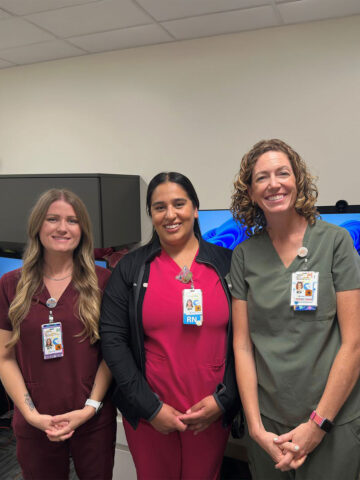Shed a tear for American children; many of them only wish they could.
The prevalence of dry eye in children has increased sharply since before the COVID-19 pandemic, with increasing screen time and decreasing sleep time, new research showed.
The analysis of children aged 5-18 years seen at a single eye clinic in California found nearly 40% met the diagnostic criteria for dry eye — a 42% increase since before the pandemic, the researchers reported. The biggest risk factors: more screen time and less sleep.
“Prolonged screen exposure — more than 4 hours a day — was associated with a 3.7-fold higher risk” for dry eye disease, “whereas adequate sleep — more than 7 hours — markedly reduced that risk,” said Rahul Bhola, MD, MBA, chief of Ophthalmology at Children’s Hospital of Orange County in Orange, California.
Bhola reported results of the cross-sectional analysis of 1320 pediatric patients at American Academy of Ophthalmology (AAO) 2025 Annual Meeting.
The patients were seen consecutively between September 2024 and February 2025 at Bhola’s group’s tertiary care pediatric ophthalmology clinic.
To evaluate dry eye symptoms, Bhola and his colleagues used the standardized Ocular Surface Disease Index questionnaires and evaluated tear film breakup time and Schirmer test, which uses filter paper strips placed on the lower lid to measure the quality of tear production. Information on the participants’ device use was gathered through surveys completed by their parents. The analysis controlled for age, sex, and environmental factors.
The highest prevalence of dry eye was seen in children aged 5-9 years, Bhola said, “suggesting that early and sustained digital exposure may disrupt normal ocular surface development and blink dynamics.”
The probability of dry eye disease was greatest in children who had an average sleep time of < 6 hours and screen time of > 3 hours a day, the study showed. According to the American Academy of Pediatrics, US children aged 8-18 years spend an average of 7.5 hours per day watching screens, including phones, computers, tablets, and television.
Younger children often have lower blink rates, immature tear-film stability and less awareness of visual fatigue, all of which heighten their susceptibility to dry eye disease. “This underscores the need for early preventive education on digital hygiene even in primary school years,” Bhola added.
Dry Eye Consequences in Children
Dry eye disease in young patients can have serious long-term consequences, Bhola said.
“While pediatric dry eye disease is often underrecognized, it can lead to chronic ocular surface inflammation, blurred vision, eye rubbing, and academic performance issues due to visual discomfort,” he said. If untreated, long-term dry eye disease can lead to damage of the corneal epithelium and increase the risk for progression of myopia and ocular surface disease in adulthood, he said.
Children tend to under-report their symptoms and often have difficulty complying with treatments such as artificial tears, screen breaks, or lid hygiene, Bhola said.
“Additionally, pediatric ocular anatomy and physiology differ from adults, making standardized adult diagnostic tools less accurate,” he said. “These factors call for pediatric-specific screening protocols and parent-guided behavioral interventions to ensure early recognition and management.”
“The conclusions are not surprising,” Ken K. Nischal, MD, chief of Pediatric Ophthalmology and Strabismus at the University of Pittsburgh Medical Center Children’s Hospital of Pittsburgh, Pittsburgh, told Medscape Medical News.
“Drye eye disease, or more importantly, evaporative dry eye disease, in children is not as easily recognized or thought of as it should be,” Nischal said. “What this study does is raise the awareness among eye health professionals that this is a problem and that when you’re counseling a child who might be getting blurred vision and you can’t find a refractive error, have a look at the ocular surface and see if it is more dry than it should be.”
He commended the study investigators for obtaining objective data about dry eye symptoms in children because testing is tailored mostly for adults. He noted the Schirmer test, which uses a paper strip to test tears on the ocular surface, can be difficult to perform in young children.
Nischal also credited Bhola and his group for using fluorescein staining to evaluate tear break up times, “but it’s not as reliable as noninvasive tear-break-up time testing — but it’s better than nothing.”
Bhola reported serving as a consultant for Sydnexis. Nischal reported no relevant financial conflicts of interest.
Richard Mark Kirkner is a medical journalist based in Philadelphia.
Read the full article on Medscape here.




